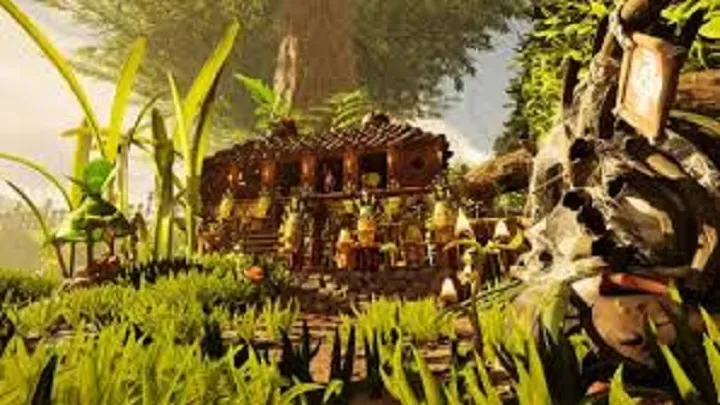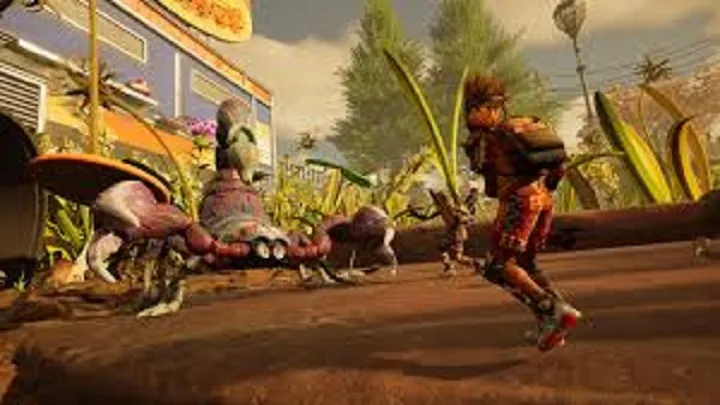Introduction
Grounded 2 takes the beloved survival-crafting premise of the first game and expands it into a richer, more dangerous world. Players are once again shrunk to the size of insects, forced to survive in a backyard ecosystem filled with both opportunity and threat. While the game impresses with its visuals, cooperative features, and expanded lore, one core issue stands out: the tension around resource scarcity and progression pacing.
In survival games, resources are everything. From food and water to crafting materials and rare upgrade components, scarcity shapes the entire experience. In Grounded 2, Obsidian Entertainment doubles down on this principle, creating an environment where every stick, drop of dew, and insect part matters. Yet the balance between scarcity and satisfaction is delicate. When handled well, scarcity creates tension and meaning. When handled poorly, it risks frustrating players and halting progress. This article will explore how this issue unfolds across different stages of play, from the opening hours to long-term community engagement.
First Hours of Discovery and Desperation
The first time players awaken in Grounded 2’s backyard, resource scarcity hits immediately. Hunger and thirst deplete rapidly, forcing players to scramble for mushrooms, dew drops, and crude tools.
This stage is where scarcity feels the most natural. Players are meant to feel weak, unprepared, and desperate. The struggle to survive creates urgency and immerses players in the miniature perspective. Every ant hill feels like a fortress, every stick a potential weapon.

Learning the Basics of Crafting
After a few hours, players start to piece together crafting recipes. Spears, crude axes, and basic armor come into play. Resource scarcity shifts from raw survival to early progression: finding enough fibers, sap, and insect parts to make reliable gear.
Here the tension begins. If resources are too scarce, frustration sets in. If they are too abundant, survival loses meaning. Grounded 2 attempts to strike a balance, but some players feel early recipes demand too many rare components, slowing momentum.
Mid-Game Grind for Rare Materials
By the mid-game, players begin hunting larger insects — ladybugs, spiders, beetles — not only for survival but for advanced crafting. This is where scarcity becomes a defining issue.
H3: The Ladybug Example
Ladybug parts are needed for key armor sets, yet their spawn rates and difficulty make farming them a grind. Players often feel trapped between repetitive farming and progression stalls.
H4: The Risk of Repetition
Repetition at this stage threatens long-term engagement. Survival games thrive on discovery, but when scarcity forces grinding, the magic fades.
Base Building and the Cost of Expansion
Building a base is one of Grounded 2’s most enjoyable features, but it also highlights resource scarcity. Grass planks, weed stems, clay, and acorn shells are required in massive quantities.
While scarcity creates value, the sheer volume needed for large builds makes some players resort to tedious farming. The balance between creative freedom and resource limits becomes a central frustration point.
Water and Food Management
Food and water are survival essentials, yet in Grounded 2, their scarcity often feels more punishing than immersive. Dew collectors help, but their slow rate and limited storage create bottlenecks.
Some players thrive on this tension, while others see it as artificial difficulty. A system meant to immerse can instead push players into repetitive micromanagement, pulling focus away from exploration.
Late-Game Progression Walls
In the late game, scarcity shifts from common resources to ultra-rare items required for tier-three gear and advanced tools.
- Rare bug parts like spider fangs or beetle shells
- Special minerals hidden deep underground
- High-level upgrade materials
At this stage, scarcity can feel like a brick wall. For solo players, these bottlenecks are especially painful, as enemies are tuned for co-op difficulty.
The Psychological Impact of Scarcity
Scarcity in Grounded 2 is not just mechanical — it affects player psychology. When every resource feels precious, tension rises. This tension can be thrilling or exhausting.
H3: The Thrill of Survival
Scarcity makes every victory feel earned. Crafting a new weapon after hours of hunting can feel immensely rewarding.
H3: The Exhaustion of Shortages
Yet constant shortages risk wearing players down. When every session feels like a grind, the survival fantasy turns into a chore.
Multiplayer and Shared Scarcity
In co-op play, scarcity takes on new dimensions. Sharing resources with friends requires communication and coordination.
- Who gets the best armor set first?
- How are rare materials divided?
- Should the team build one massive base or several small shelters?
Scarcity strengthens cooperation but can also spark conflict. This dynamic makes multiplayer uniquely intense but also prone to tension when resource bottlenecks arise.

Developer Balancing and Updates
Scarcity is not static. Developers at Obsidian have already adjusted resource availability through patches, tweaking spawn rates, recipe costs, and progression pacing.
H3: Community Feedback
Much of this balancing comes directly from player feedback. The community actively debates whether the game should be harder or more forgiving.
H3: Seasonal Adjustments
Future updates may introduce seasonal cycles — rain, droughts, or insect migrations — which could naturally adjust scarcity and add variety to farming.
Long-Term Community Adaptations
Over time, the community develops strategies to mitigate scarcity. Guides, farming routes, and efficient builds circulate online. What once felt scarce becomes manageable through collective knowledge.
Still, the issue remains central to the Grounded 2 experience. Players must constantly navigate the line between chaos and control, scarcity and abundance.
Conclusion
Grounded 2 thrives because it embraces survival tension, and resource scarcity is the heart of that design. The problem is not scarcity itself but how it is balanced across progression stages. In the early game, scarcity is immersive and thrilling. In the mid-game, it risks becoming grindy. In the late game, it can stall progression entirely.
Obsidian’s challenge is to ensure scarcity creates tension without frustration, immersion without burnout. The balance between chaos and structure will define the game’s long-term success. For players, scarcity is both the obstacle and the reward — the reason Grounded 2 is memorable, but also why it may drive some away.

















